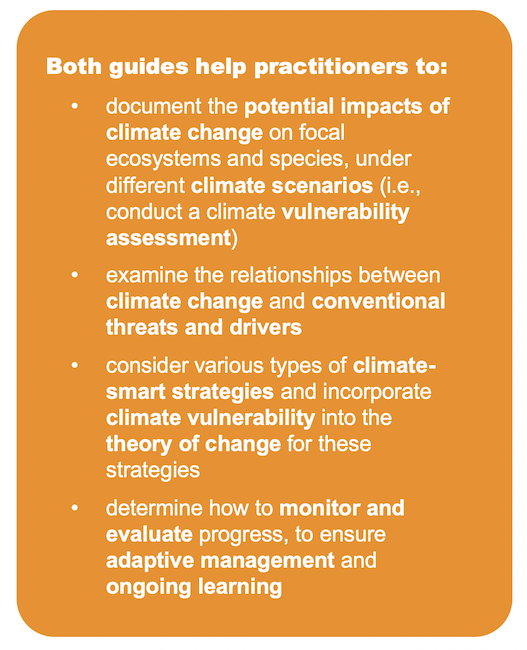
Climate change is increasingly threatening ecosystems, species, and the people who depend on them. Guidance for practicing climate adaptation has advanced considerably in the last 20 years. While it is rightly suggested that climate considerations should be included in human and conservation planning from the outset, guidance and funding is frequently restricted to “climate adaptation” as a separate activity. The result is a lack of support for practitioners to fully integrate climate into general planning.
To help fill this gap, the Conservation Measures Partnership’s Climate Guidance Working Group has collaborated with the project “Ecosystem-based Adaptation (EbA) in High Mountainous Regions of Central Asia” of the Deutsche Gesellschaft für Internationale Zusammenarbeit (GIZ) GmbH to develop two guidance documents: Conservation Standards Applied to Ecosystem-based Adaptation and Climate-Smart Conservation Practice. These guides build on the widely used Open Standards for the Practice of Conservation, and while both incorporate examples from Central Asia, they are aimed at a global audience of EbA and biodiversity conservation practitioners, as well as protected area managers.
The Conservation Standards Applied to Ecosystem-based Adaptation guide focuses on assessing how climate change may affect ecosystem-dependent human communities and using ecosystem conservation and restoration to maintain the resilience of those communities. Similarly, the Climate-Smart Conservation Practice guide focuses on assessing how climate change may affect focal ecosystems and species and on incorporating this knowledge into the broader assessment, design, implementation, monitoring, and adaptive management of conservation projects.
Addressing the climate crisis requires integrating climate into all aspects of our work. As we do this, we should keep in mind the words of Albert Einstein: “In the midst of every crisis lies great opportunity.”


